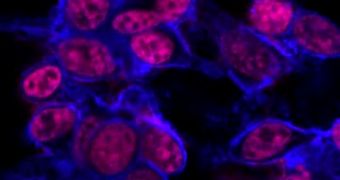Scientists at the Duke University have recently announced the development of a new type of nanoscale drug delivery system, which shows great promise for treating cancer. According to the experts, animal models that had developed cancer had their tumors annihilated by chemotherapy drugs loaded onto the new cells after just one treatment session. Additionally, after they deliver the drugs to the tumor, the transport vehicles simply break up into harmless byproducts, which are absorbed and then eliminated.
“When used to deliver anti-cancer medications in our models, the new formulation has a four-fold higher maximum tolerated dose than the same drug by itself, and it induced nearly complete tumor regression after one injection. The free drug had only a modest effect in shrinking tumors or in prolonging animal survival,” DU Pratt School of Engineering Theo Pilkington Professor of Biomedical Engineering Ashutosh Chilkoti says of the new study results.
In a paper published early online in the latest issue of the top journal Nature Materials, the experts explain that their drug's abilities are increased precisely by the fact that it's attached to a nanoparticle. The delivery system is made up from chimeric polypeptide, a special, artificial type of polypeptide. It is being produced by genetically modified E. coli bacterium cultures, which are widely used to synthesize various types of proteins.
“Just as importantly, we believe, is the novel method we developed to create these drugs. Unlike other approaches, we can produce large quantities simply and inexpensively, and we believe the new method theoretically could be used to improve the effectiveness of other existing cancer drugs,” Chilkoti adds. Other therapies are made difficult by the fact that the drugs are usually not water-soluble. This limits the cell's ability to take them in.
“When these two elements [the drug and the polypeptide] are combined in a container, they spontaneously self-assemble into a water-soluble nanoparticle. They also self-assemble consistently and reliably in a size of 50 nanometers or so that makes them ideal for cancer therapy. Since many chemotherapeutic drugs are insoluble, we believe that this new approach could work for them as well,” the expert says. Funding for the new paper came primarily from the US National Institutes of Health (NIH).

 14 DAY TRIAL //
14 DAY TRIAL // 
